When searching for a refined yet natural-looking landscape material, river rocks check all the boxes. Smooth and multi-sized, they create organic textures perfect for gardens, patios, walkways, and decorative beds.
Beyond aesthetics, river rocks offer practical advantages like enhanced drainage, erosion resistance, and low maintenance needs – exactly what busy homeowners and landscape pros value.
In this comprehensive guide, I’ll explore why river rocks make an exceptional landscaping material choice focusing on five key benefits:
Top 5 Reasons Landscapers Love River Rocks
- Visual Interest
- Drainage Abilities
- Long-Lasting Durability
- Minimal Upkeep Needs
- Value Added
Here are best practices for proper installation, recommended rock sizes, handy calculators, and FAQs.
Organic, Natural-Looking Visuals
The smoothly rounded, irregular shapes of river rocks lend a breezy, natural style to all different garden designs from formal spaces to wildflower meadows. Their multi-tone colors and textures make beds pop while complementing greenery.
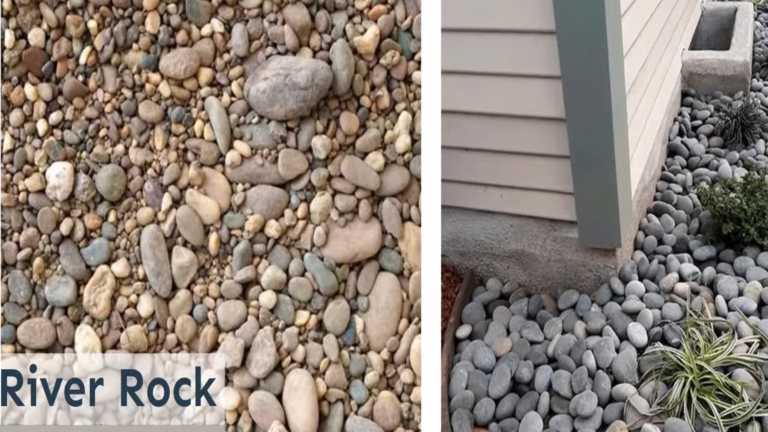
Go with mostly small to medium 1-3” stones for tidy pathways with a few scattered 3-5” rocks for variation. Or try a bold statement boulder flanking the front walkway. Whatever your vision, river rocks enhance aesthetics.
Unrivaled Drainage Capacity
Proper drainage is make-or-break, especially in regions with heavy rainfall. River rocks allow quick water passage straight through to the soil below unlike mulch that clogs and pools moisture.
This free-flowing drainage protects plants from oversaturation and disease while still feeding their roots. Compared to pea gravel, angular rocks or uniform mixes, river rocks have optimal porous spacing that prevents washouts.

Well-draining river rock beds are the ideal choice to withstand intense storms and irrigation while keeping landscapes happily watered.
Long-Lasting Durability
River rocks hold up incredibly well to heavy foot traffic along pathways, planter edges, and entertainment spaces. Their smoothly rounded nature resists chipping or cracking compared to cut stone.
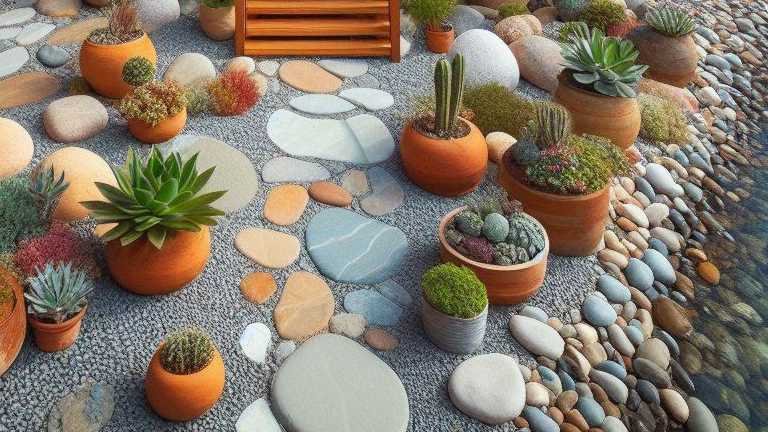
Basalt, granite, and quartzite river rocks have extra dense structures to stay steadfastly in place for decades rather than eroding. Pavers wear down and wood rots over time while rugged river rocks retain their strength and shape persistently despite harsh weathering.
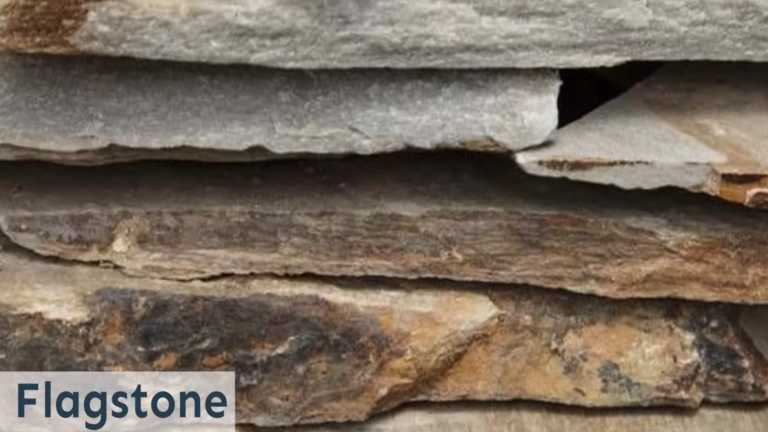
For permanent solutions like patios, walkways,

and retaining walls, river rocks are built to last.
Low-Maintenance Needing Minimal Care
Outside of initial installation, river rocks require very minimal upkeep, unlike grass, gravel, and wood chip beds that demand frequent attention. Just pull occasional weeds, spray down pre-emergent in spring and spot replace stones as needed.
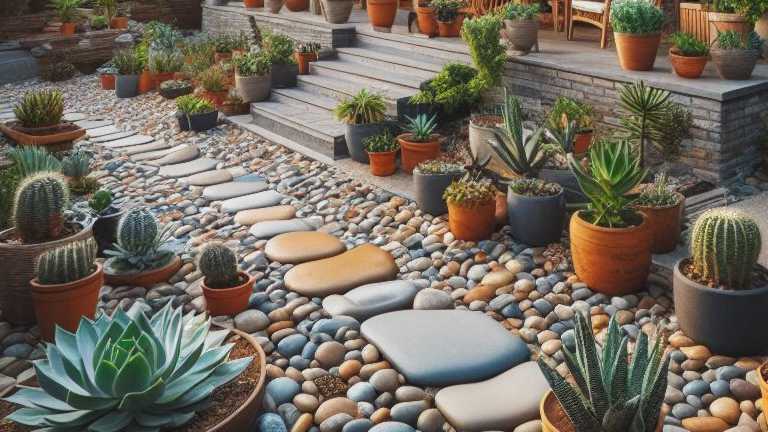
Their reliably tidy appearance comes from proper perimeter containment like landscape edging and divider strips. This stops annoying spread so river rock beds retain crisp outlines year after year with little help.
For pros and homeowners wanting beautiful, natural beds without the work, low-maintenance river rocks are perfect.
Added Home Value Upon Resale
Quality landscaping like stunning river rock walkways or patio spaces recoups investments by increasing home selling prices substantially. Outdoor living areas add a special appeal that catches buyers’ eyes.

Landscapes requiring professional consultation and installation using stone, boulders, and water features return 100-200% ROI compared to lawn upgrades only generating 75% ROI.
While river rocks have higher upfront costs than mulch or gravel, their visual flair and durability add value for years to come.
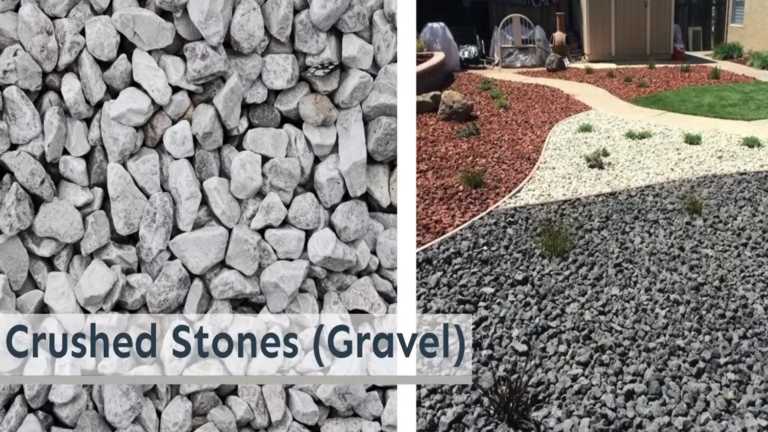
Now that you know why landscapers love river rocks for drainage, durability, and visuals, let’s get into the details of proper installation. Correct construction ensures river rocks excel at those top benefits for decades rather than failing from improper prep.
My Tested Method For Mastering River Rock Landscape Installation
With over 25 years as a civil engineer designing beautiful yet functional landscapes, I’m often asked for tips on properly installing river rock beds, patios, and walkways. Done right, river rock brings a wonderful natural aesthetic, drainage performance, and low maintenance to any property. This article shares my best practices on planning, base preparation, installation, and upkeep based on extensive experience.
Step 1: Site Evaluation
Thoroughly examine the landscape area before finalizing plans. Assess:
Step 2: Soil Conditions
Inspect soil texture, compaction, moisture, and stability. River rock suits well-drained, stable soils best.
Step 3: Slope and Drainage
Steep slopes above 5:1 present retention challenges. Check drainage patterns to identify runoff trouble spots.
Step 4: Sun and Shade Exposure
This impacts soil moisture and vegetation growth between rocks over time. Plan more weed control in full sun.
Step 5: Available Space
Measure area dimensions, clearances from structures, and access points. This informs needs for excavation, edging, and material quantities.
Base Layer Requirements
Proper base preparation is crucial under river rocks:
Compacted Subgrade
Excavate 4-6 inches deep, tamp soil firmly, and level. Compaction provides stability.
Gravel Foundation
Install a 4-6 inch layer of crushed gravel like road base aggregate. This creates drainage below rocks.
Landscape Fabric (Optional)
Some use fabric over the gravel to restrict weed growth while allowing drainage. This adds cost but reduces maintenance.
Edging
Edge the perimeter with metal, plastic, stone, or concrete strips to contain rocks. Leave 1-2 inch lip above ground level.
River Rock Selection
Choose aesthetically pleasing rocks that suit the landscape:
Rock Types
Common varieties like basalt and granite have gray/black color. Limestone brings tan/gold hues. Quarry source affects appearance.
Size Range
Standard is 1-3 inch diameter rocks. Go larger for bolder texture or smaller for finer detail. A blend of sizes creates natural variety.
Angularity
Rounded river rocks roll underfoot. Angular crushed aggregate stays put better on slopes and paths. Match shape to use.
| Rock Type | Sizing | Angularity |
|---|---|---|
| Basalt | 1-3 inches | Angular |
| Granite | 1-4 inches | Rounded |
| Limestone | 1-2 inches | Mixed |
Installation Process
Proper installation techniques ensure lasting quality:
Depth
4-6 inch depth is recommended. Shallower lacks stability and deeper wastes material.
Hand Placement
Carefully place rocks by hand to avoid damaging landscape fabric underneath. Take time to create attractive blending.
Compaction
Use a vibratory plate compactor to gently settle rocks into a gravel base. This minimizes later shifting and settling.
Containment
Keep rocks neatly in place with additional edging on slopes or dividers between beds. Top off perimeter edges.
Accessories
Add final touches like stepping stones, decorative rock accents, landscape lighting, and plants.
Maintenance Tips
With good installation, river rock requires minimal periodic upkeep:
- Inspect drainage after major storms in the first year or two to ensure runoff patterns are working well.
- Replenish any areas with significant settling to maintain even coverage.
- Hand-pull occasional weeds. Spot treat with mild herbicide if overgrown.
- Sweep debris like leaves from rock surfaces to maintain tidy appearance.
- Check and refresh containment edging components as needed over time.
Properly planned and installed river rock creates a landscape feature that can be admired and enjoyed for decades with very little maintenance required. Follow these best practices and tips to get the most from your investment. Please reach out if you need any guidance bringing natural stone beauty to your property!
Conclusion and Key Takeaways
With over 25 years of civil engineering expertise designing beautiful, functional landscapes, I’ve learned the keys to success with river rock are:
- Analyzing existing site drainage, slope, and soil stability
- Installing a stable compacted gravel base layer for drainage
- Selecting aesthetically pleasing rocks suited to use
- Careful hand placement and compaction for stability
- Using containment edging to prevent the spread
- Minimal maintenance is needed beyond the first-year drainage check
River rock landscapes bring wonderful natural texture and flow to both homes and commercial properties.
Taking time to prep the area and use proper base layers will create crisp, well-contained river rock beds or pathways ready for plants, steps, fixtures and more:
Prepping the Install Area
- Outline the shape with spray paint or stakes
- Edge a 4-6” deep x 6-8” wide trench around the perimeter
- Fill with 2-4” of crushed gravel (1⁄4-3⁄4”) for drainage/weight
- Compact gravel layer with a hand tamper
Leveling and Containment
For river rocks to resist spreading and retain tidy edges, ensuring everything is compacted and contained is crucial:
- Gardens/Beds: Install 4-6” landscape edging above the gravel layer to line the trench. Black plastic or powder-coated aluminum works well.
- Pathways: Place concrete divider on both sides at necessary height above gravel trench to contain rocks.
- Slopes: Use landscape timbers, bricks, and blocks to terrace river rocks and prevent washout.
- Fire Pits: Line the inside of the pit hole with heavy-duty landscape fabric pinned to stay put.
Now you’re ready to spread and level the river rocks.
Spreading River Rocks
- Pour rocks over the prepared base area to the desired 1-2” thickness
- Use a board and mallet/tamper to flatten top layer evenly
- Ensure rocks sit 1⁄2-1” below the top edge of any dividers
- Check levels routinely and top up settled areas
Be sure to use suitable base fill and solid containment methods like the options above when working with river rocks. This best practice helps them maintain neat edges and put their drainage, texture, and aesthetic perks to work for years to come.
Next, we’ll review popular river rock sizes and ratios to order for all your landscaping and hardscaping projects.
River Rock Sizes for Landscapes
River rocks span a wide range of sizes, from 1⁄4” pea gravel to giant 10” boulders for retaining walls. Using a thoughtful blend creates optimal texture and contrast.
Recommended size ratios:
- 50-70% 1.5 – 3” stones
- 20-30% 3⁄4 – 1.5” pebbles
- 10-20% 3 – 5” accent rocks
The medium 1.5-3” size composes the majority for texture and main coverage. Then supplement with gravel to fill gaps and stabilize plus some larger accent rocks for variation.
Customize sizes and ratios when ordering materials depending on your exact needs:
- Pathways – Mostly small and medium
- Gardens – More accent sizes mixed in
- Fire pits – Larger rocks as vocals
- Streams – Range of small to large
This purposeful blend of river rock dimensions brings the perfect natural aesthetic and functionality. Order them by weight (tons) or by bag.
Now let’s go over some top maintenance tips to keep river rock landscaping polished.
Maintaining River Rock Landscapes
The biggest perk of using river rocks—they require very minimal maintenance when installed properly. Just follow these simple upkeep practices:
- Check after heavy rains and refill settled areas
- Pull occasional weeds between rocks
- Add stepping stones or fill erosion rills on slopes
- Pre-emergent spray deters future weed seeds
- Refresh edges or walking zones with new stones
Follow those easy steps above as needed, and your river rock landscapes will maintain their pristine drainage power and beauty for years on end.
We hope this guide has shown all the potential river rocks have for enhancing landscape beds, paths, patios, and more while needing little upkeep. Read on for answers to some of the most frequently asked questions.
River Rock Calculators
Nail material volumes for all projects with these handy calculators:
- River Rock Bed Calculator
- Pathway & Walkway Calculator
Simply enter your dimensions and these tools estimate the total cubic feet, bags, or tons required. Finally, let’s address some frequent questions about river rock landscaping:
Problem-Solving River Rocks for Landscapes
What type of base goes under river rocks?
4-6” of crushed gravel (1/4 – 3/4”) is recommended under all river rock installations. The porous gravel fills the dugout trench allowing drainage while stabilizing rocks above.
Do I need to contain river rocks?
Yes, additional containment is strongly advised like landscape edging, concrete dividers or bricks depending on the installation (beds, paths, etc). Containing properly prevents frustrating spread issues.
How often do river rocks need maintenance?
The big advantage of river rocks is very minimal long-term maintenance if installed properly upfront. Expect only occasional weed pulling, spot-treating ant beds, and topping off settled areas. Their durability handles the rest!
What are the best river rock colors?
Popular hues like salt and pepper or multi-colored mixes coordinate beautifully with environments from modern spaces to cottage gardens. Or go bold with all-white river rock walking paths. Choose colors that suit your style.
What size gravel base is best under river rocks?
With over 25 years of landscape design experience, I recommend using 3/4″ or 1″ crushed gravel aggregates for the base layer under river rocks. The angular gravel pieces interlock well to provide a stable foundation with good drainage capacity. For heavy-use areas, a depth of 6 inches is ideal.
Should landscape fabric be used under river rocks?
While not strictly necessary, I often suggest installing a permeable landscape fabric over the gravel base before adding river rocks. This provides a weed barrier to reduce maintenance needs, while still allowing proper drainage. Just be sure to use a durable, non-woven fabric designed for this application.
What containment edging works best for river rock beds?
For keeping rocks neatly in place around perimeter edges, I prefer using metal edging strips. The rigid aluminum or steel strips are installed cleanly and provide a small retaining lip above ground level. This prevents the frustrating spread of loose rocks into lawns or other areas.
Can river rocks be installed on a steep slope?
On slopes exceeding 3:1, containment can become difficult without terracing or shoring measures. I’d recommend limiting river rock beds to more modest slopes of 5:1 or less to prevent erosion and retain the rocks properly. Proper drainage at the base is also critical on any incline.
What size river rocks should be used in a walkway?
For river rock walkways designed for foot traffic, I suggest using crushed rock aggregates sized 1-2″ in diameter. The smaller rocks provide a firm surface for walking without wobbling excessively underfoot. Rounded rocks also roll less than angular varieties.
How deep should river rocks be around a fire pit?
Safety is my top concern with river rock fire pits. I advise installing the rocks at least 18-24 inches deep around the entire pit perimeter. This prevents dangerous heat transmission beyond the rocks to surrounding vegetation or materials.
Can river rock beds be installed around swimming pools?
Yes, but proper precautions are needed. Leave at least 3 feet of exposed concrete around the pool edge before transitioning to rocks. Also, slope the transition area away from water for drainage and use non-rounded varieties to prevent slippery conditions.
What’s the best way to keep river rocks contained on a hillside?
For steep slopes, I recommend installing terraced retaining walls or durable landscape timbers to create multiple contained levels for the river rocks. This prevents erosion and runoff while providing the beauty of a river rock hillside.
How often do river rock beds need to be replaced?
With proper installation and containment, installed river rocks should last 10-15 years before needing full replacement. Periodic spot application of new rocks may be needed in high-traffic areas or where erosion occurs. The annual inspection helps identify any problem spots.
Can river rocks harbor bugs or pests?
It’s uncommon, but occasionally ants or weeds may establish in neglected river rock beds, especially in full sun exposure. Regular light maintenance like sweeping debris and hand-pulling weeds prevents this. Spot insecticide treatment can also mitigate isolated issues.
What kind of river rocks work best in cold climates?
For cold regions, I recommend using hardy igneous rock varieties like basalt or granite for river rock landscaping. The angular crushed rocks resist weathering and fracture from freeze-thaw cycles better than softer, rounded river rocks.
Is it okay to place river rocks alongside a building foundation?
I advise leaving at least 12 inches of space between any building foundation and the start of the river rock area. This prevents splashback and moisture buildup against the foundation. Use mulch or gravel closer to structures instead.
Can river rocks help with drainage issues?
Yes, when installed properly over an aggregate base layer, the void spaces in river rocks provide an avenue for rainfall to permeate into the ground. They serve drainage better than solid concrete or turf. However sufficient surface slope is still required to avoid standing water.
How do you prevent weeds from growing in river rock beds?
Regular light maintenance like hand-pulling stray weeds is the best preventative measure. For more problematic areas, using a porous landscape fabric over the base gravel can help restrict weed growth while still allowing drainage.
What river rock colors work well together in the same area?
I like combining darker charcoal or black basalts with lighter salt and peppers or rust-colored granite gravels for contrast. Pairing distinctive large feature rocks with a neutral 1-3” base is also attractive. Mix things up!
How are river rocks installed on steep slopes?
For slopes exceeding 5:1, my method is to create terraced retaining walls to break the grade into steps. The river rock backfill is then installed section-by-section using the terrace dividers for containment. This prevents slope erosion while achieving the desired aesthetic.
Can river rocks shift or settle excessively over time?
Some settling can occur, especially in the first year as the rocks interact with rainfall. Using a well-compacted gravel base minimizes this though. Annual top-dressing with fresh rocks in low spots maintains an even surface long.
What kind of shovel is best for installing river rocks?
I prefer a sturdy square masonry shovel when handling river rocks to scoop and place the heavy gravel material. The square shape keeps rocks contained better than a rounded shovel. Just be sure to wear protective gloves!
Do river rocks add property value for homeowners?
Definitely – installed properly in the right locations, river rock landscaping adds wonderful curb appeal. The natural textures and colors make spaces like yards and gardens more relaxing and inviting. This translates to real dollar value at resale as an attractive landscaping upgrade.
Can standard lawn equipment be used to maintain river rock areas?
I don’t recommend it – the loose rocks can damage mower blades and flying debris is a hazard. Use a stiff broom to sweep off surfaces instead. If snow removal is needed, a plastic shovel avoids scratching rocks. Maintain the beauty, but use the right tools.
Are permeable pavers an alternative to loose river rocks?
Yes, poured permeable concrete or snap-together plastic pavers can provide a firmer walking surface with similar drainage traits as loose rocks. The increased cost may be warranted for patios, walkways, or parking areas needing stability with a polished look.
Should river rocks be installed by professionals?
While DIY is possible for smaller projects, the labor of excavation, material handling, base preparation, and finishing for larger areas often makes hiring a professional installer worthwhile. They have the manpower, tools, and experience needed to do the job properly.
